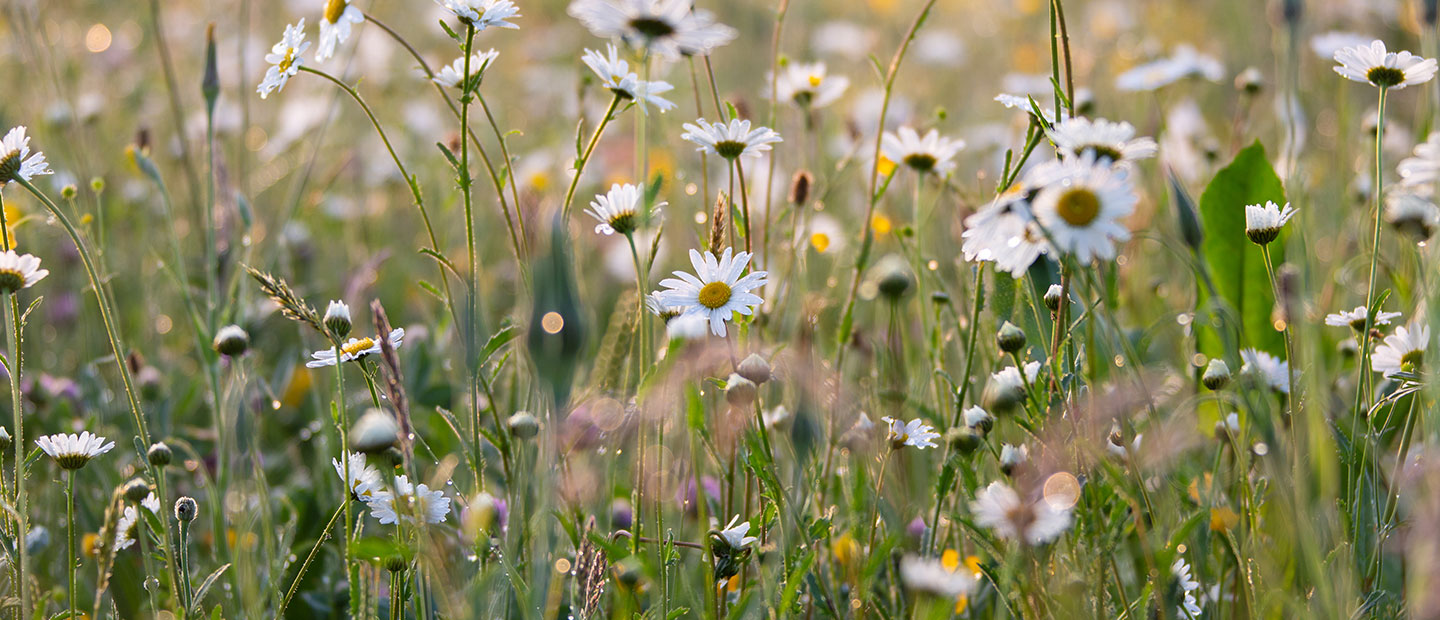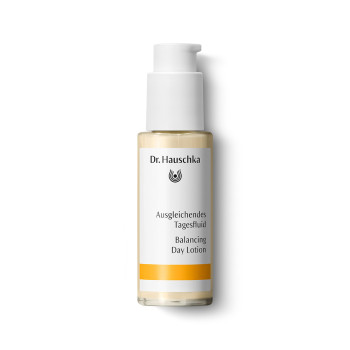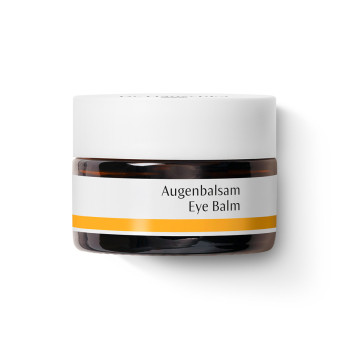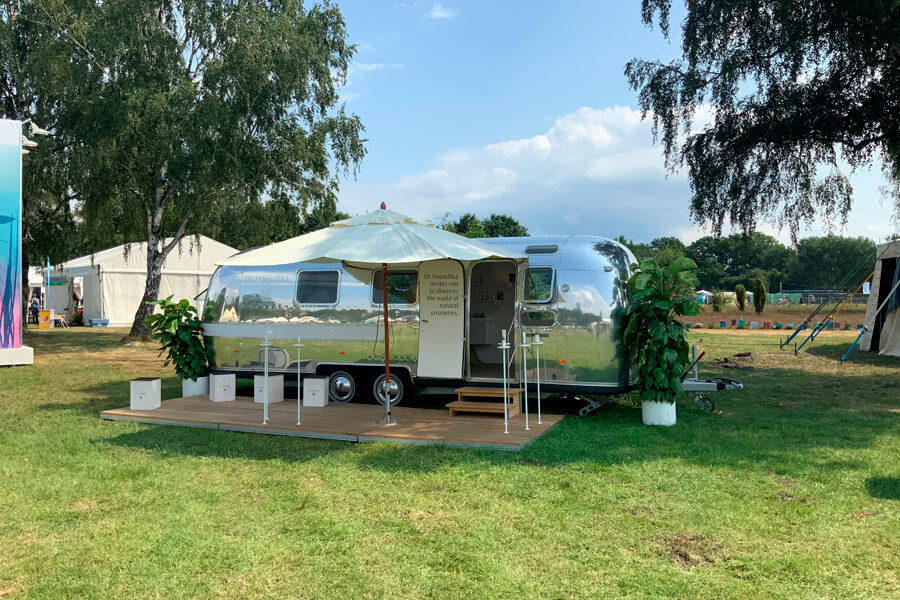Ecology
What does your Lip Balm have to do with butterflies?
And what do our products have to do with biodiversity? We talked to Alexandra Čamek, an agricultural scientist who works in our Cosmetic Safety department. Her focus: the environment and biodiversity.
Imperfect beauty
Nature has no claim to perfection. It is colourful, diverse and beautiful on the inside – just like us. Alexandra also loves the beauty of the “imperfect”, the natural, the genuine. She studied agricultural sciences at the University of Hohenheim and worked in Paraguay and Georgia in the field of agriculture and viticulture. Her grandfather ran a dairy farm in Bavaria and her mother’s garden was more on the wild, unkempt side. These were things she was slightly embarrassed about back then, but proud of today. Her attitude to life: nature needs to breathe.
The 150 different plant species in Dr. Hauschka’s medicinal herb garden are certainly able to do just that. The garden directly behind the company building forms a sort of biotope, a little oasis with its own closed ecosystem. It provides animals and wild plants alike with sustainable habitats – for the development of new plant generations and the preservation of biological diversity. WALA is pursuing this same goal by monitoring selected species-rich grasslands. The project aims to increase biodiversity in these areas over a longer period of time.
How alive is our environment?
Alexandra believes the world is in the middle of a biodiversity crisis: “Species numbers have drastically declined, green spaces need to be better protected, and the One Health approach is more important than ever, as I strongly believe that the health of humans, animals and plants is all interconnected.” Such biological relationships are usually small, but their global impact can be drastic. If the rainforest is cut down, this has a direct impact on climate change. And cycles like this can be found everywhere we look. Ecosystems can only remain stable with an abundance of biodiversity. “I am motivated by the ecological impact of my work,” says Alexandra. “I see the urgent need to act and I want to give things back to nature.”
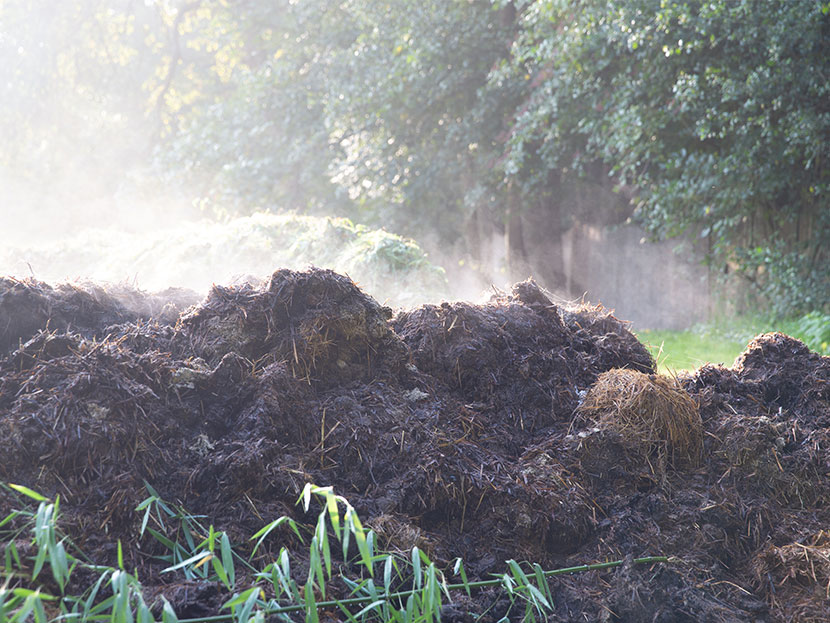
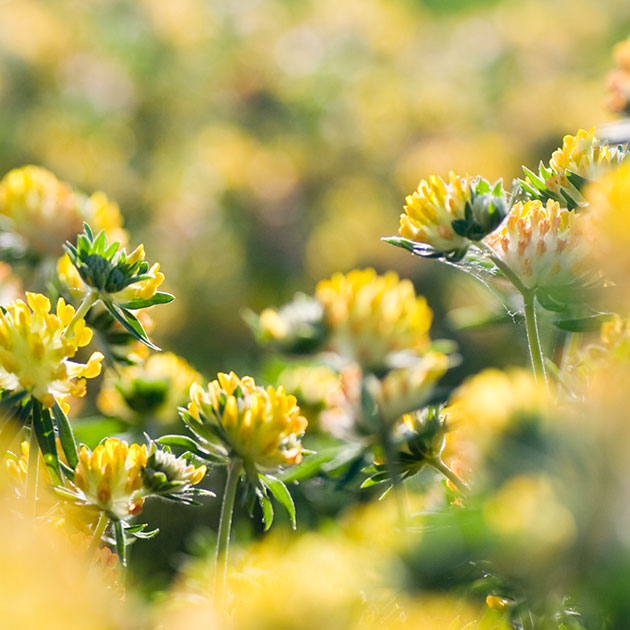
Wild bees and manicured lawns
Right next to the laboratory building in Bad Boll is the biodiversity path, which provides habitats for both animals and plants. This area makes biodiverse structures accessible to all and creates awareness of natural cycles. Garden lawns, for example, may look neat and tidy, but they break a natural cycle – one that is particularly vital to the survival of wild bees. Although these bees do not produce honey, they are one of the most important pollinators of our wild and cultivated plants. Around 70 percent of wild bees build their nests in loose, sandy, unsealed soil. However, they rarely find this in cities with its abundance of concrete and manicured lawns. If we don’t want to lose the wild bee as a pollinator of our food, we have to start looking after nature. “By respecting our environment, we are respecting ourselves and protecting our livelihood.”
Dr. Hauschka takes responsibility
We strive to act altruistically, in solidarity and in harmony with nature. We want to increase biodiversity while simultaneously creating synergies between Dr. Hauschka, agriculture and science. To achieve this, WALA’s Biodiversity Working Group is working with the Demeter-certified Sonnenhof farm and the University of Hohenheim on a special monitoring project. Together, they have selected suitable grassland areas where they want to sustainably increase biodiversity. This is an agricultural challenge for Alexandra and her team. It can take up to three years for species to emerge and reach a stable population, with a lot depending on the right timing and the weather. Seeding starts in May and Alexandra is happy to have young students on the team with whom she can share knowledge and new findings.
A healthy environment means healthy people
Anthyllis has been recognised as a medicinal plant since the 16th century and can be found in many Dr. Hauschka products, including our Balancing Day Lotion, Eye Balm, and lip care products like our Lip Balm. Anthyllis proves just how important functioning biological cycles are, as the plant provides a habitat for numerous insects – particularly the small blue butterfly caterpillar, which only eats anthyllis. So if the plant becomes scarce, this butterfly’s survival is threatened. Without anthyllis, there’s no Lip Balm and no small blue; and without the small blue, there’s a lack of biodiversity.
So what does this have to do with skin care?
Well, just like nature, your skin needs to breathe. As Alexandra puts it, “Wild nature is just as beautiful as wild, natural skin.” People don’t have to be perfect, but they should be healthy. Whenever you choose Dr. Hauschka as a consumer, you are choosing to make a different impact on the world. You benefit from a product that has a positive effect on both the environment and your well-being. Proof that, even in small ways, you can make a big difference.

